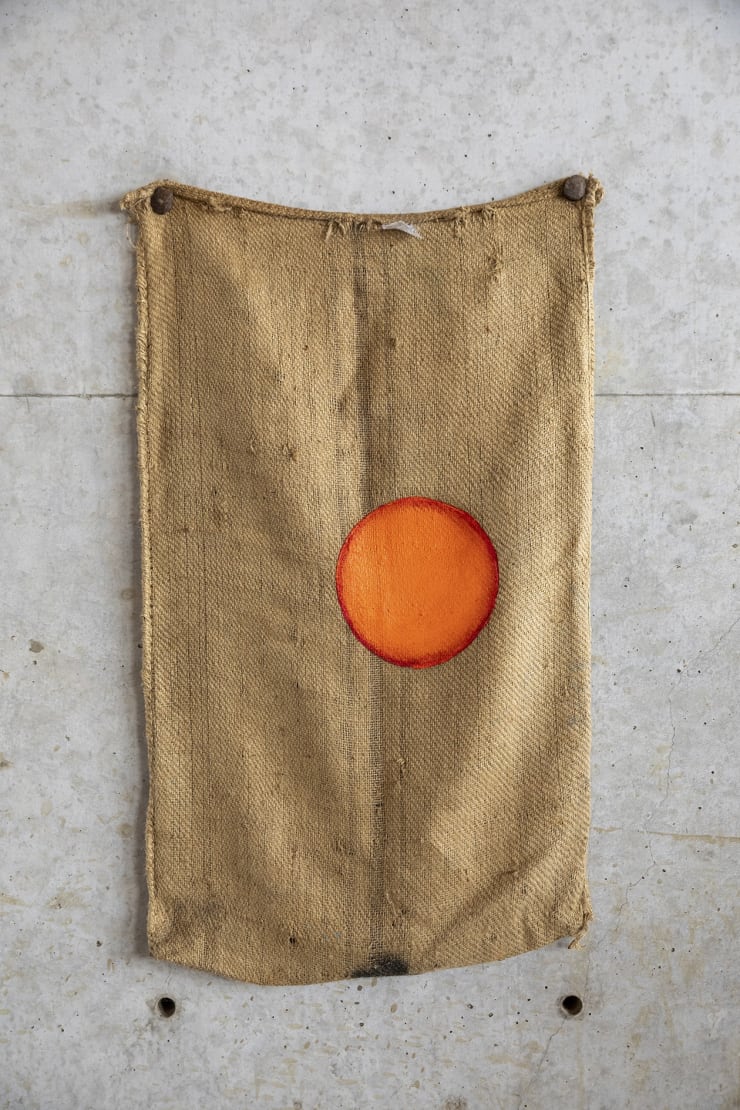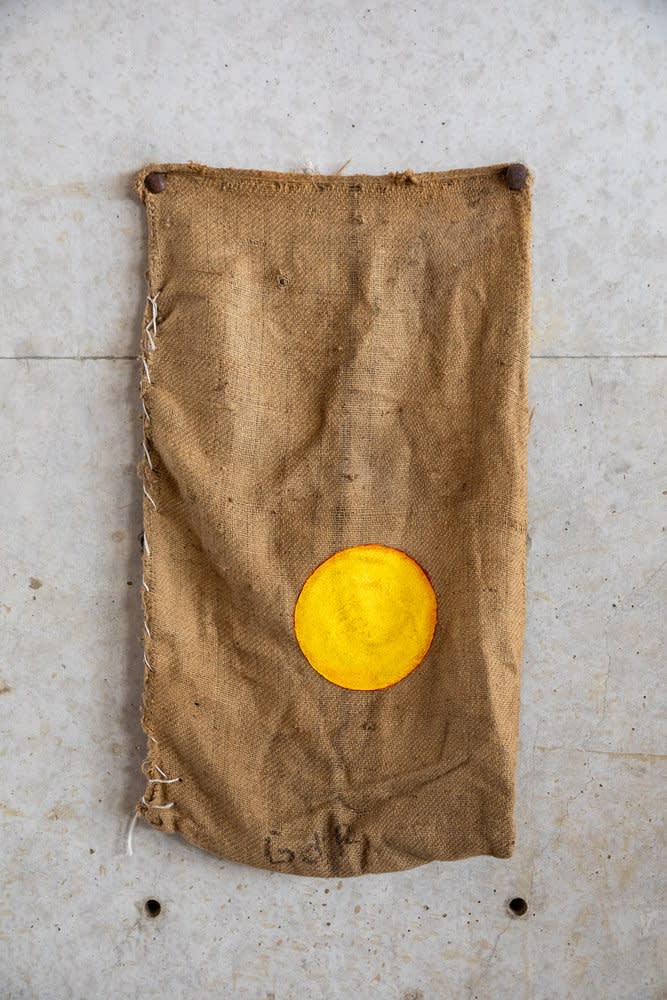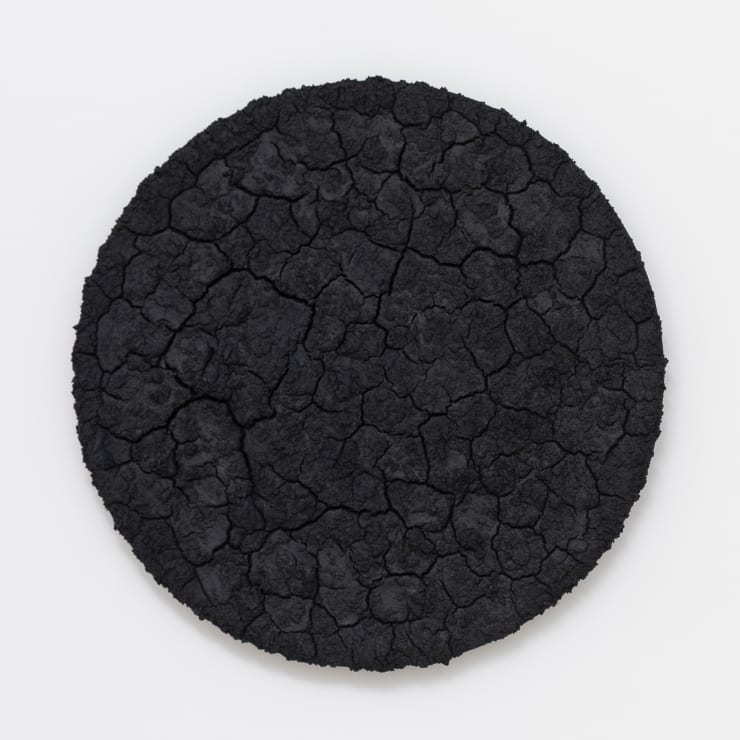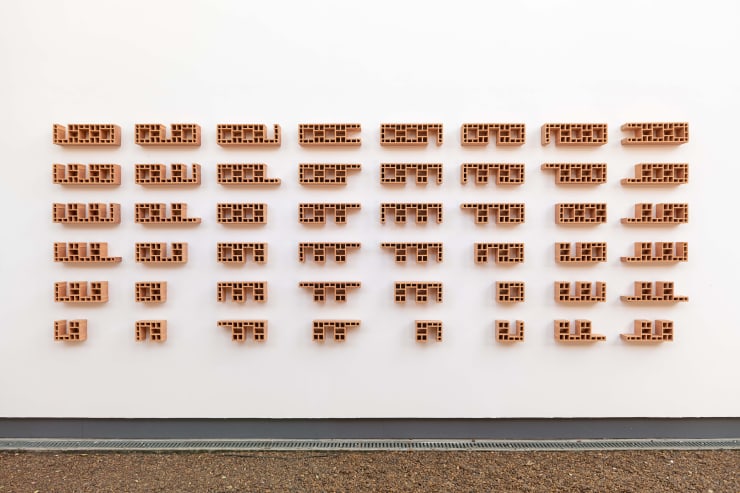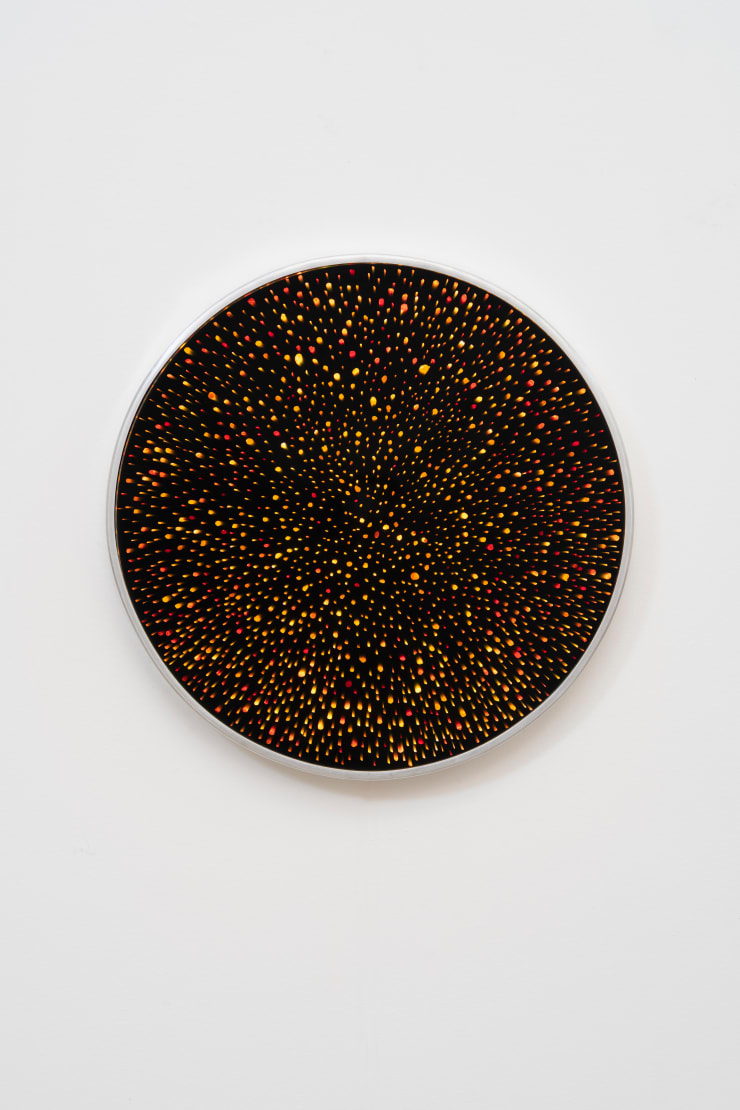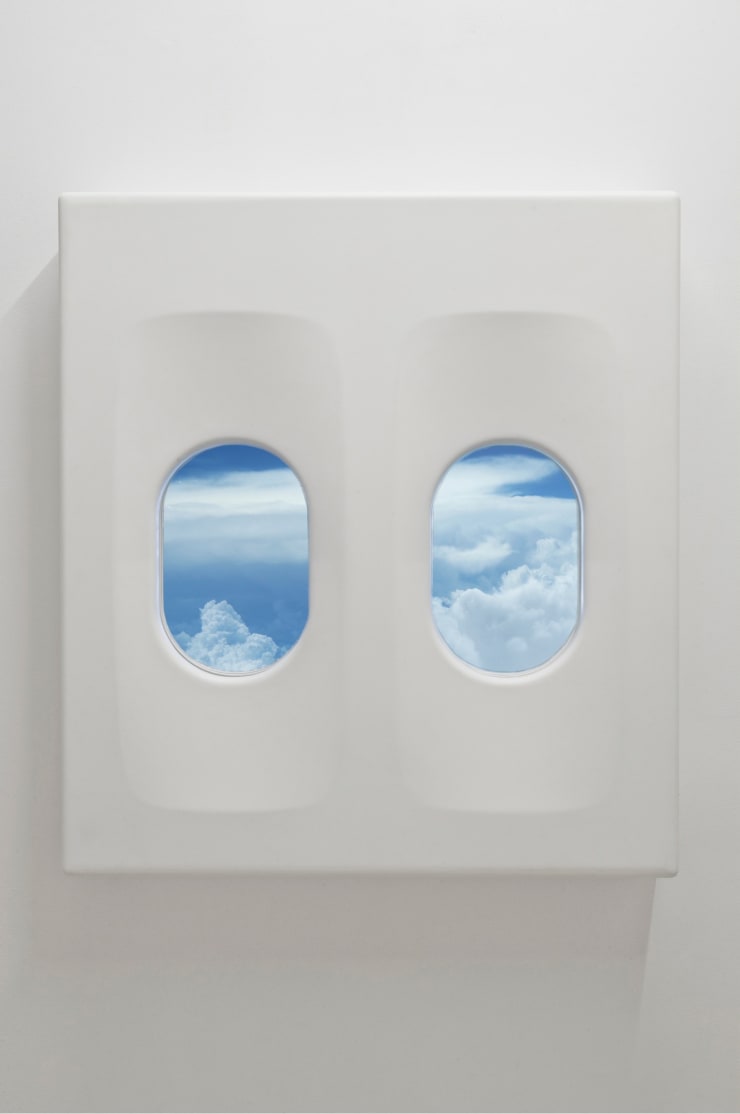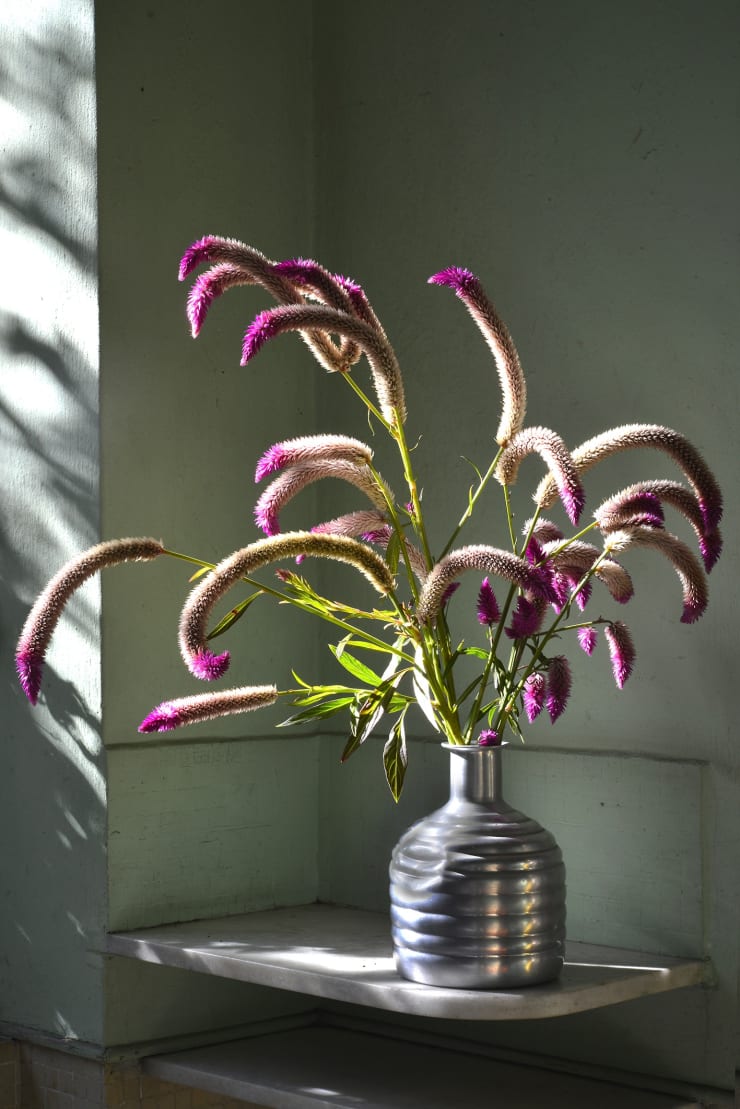-
ArtRio 2022
Equilíbrio -
A quintessential word for designating stability, “equilibrium” is used in physics to describes a state where the various forces acting on a given object do not change its situation. Arising from either harmonic or opposing forces, equilibrium is intrinsic to artistic creation. Inspired by the recent series by Rochelle Costi, Equilíbrio[Equilibrium] (2021), Luciana Brito Galeria is presenting at ArtRio 2022 a group of works that deal with how the search for equilibrium permeates the creative processes of its artists taking part in this show: Bosco Sodi (1970, Mexico), Caio Reisewitz (1967, Brazil), Hector Zamora (1974, Mexico), Iván Navarro (1972, Chile), Leandro Erlich (1973, Argentina), Marina Abramovic (1946, Yugoslavia), Rafael Carneiro (1985, Brazil), Regina Silveira (1939, Brazil) and Rochelle Costi (1961, Brazil). Also on this occasion, for the first time in Rio de Janeiro, the gallery is presenting the Sala Modernista project, a special space for showing historical works by Waldemar Cordeiro (1925, Italy – 1973, Brazil), Geraldo de Barros (1923–1998, Brazil) and Thomaz Farkas (1924, Hungary – 2011, Brazil). Another novelty is brought by the works by Afonso Tostes (1965, Brazil), an artist from the state of Minas Gerais who was recently added to the gallery’s roster.
-
AFONSO TOSTES | bosco sodi | caio reisewitz | Campana
delson uchôa | Geraldo de barros | HÉCTOR ZAMORA | IVÁN NAVARRO
leandro erlich | marina abramovic | RAFAEL CARNEIRO | Regina silveira
ROCHELLE COSTI | Thomaz Farkas | Waldemar Cordeiro
-
Afonso Tostes
1965, Belo Horizonte, Brazil. Lives and works in Rio de Janeiro, BrazilMaterial and its structure, as well as forms of connection, fixation and support, are the concepts that Afonso Tostes finds most interesting. And in the 2000s the artist began an investigation that now guides his work: tridimensionality and its representation in space. This research springs from a consistent evolution since the outset of his career, which has included the study of organic structural forms in drawing and in painting. Known for his large installations, Tostes recovers the previous histories of materials, mainly wood, revealing and transforming their narratives, according to a sensitive reconstruction of the exhibition space, or even through the resignification of preexisting smaller objects such as work tools and utensils.
Afonso Tostes studied arts at Escola Guignard (1980, Belo Horizonte/ MG) and, later, at the Escola de Artes Visuais do Parque Lage (1989 to 1994, Rio de Janeiro). The venues of his main solo shows have included Sesc Pompeia (2019, São Paulo/SP), Casa França Brasil (2013, Rio de Janeiro/RJ), Museu de Arte Moderna – MAM/RJ (2011, Rio de Janeiro/RJ), Museu de Arte Contemporânea – MAC Niterói (2009, Rio de Janeiro/RJ), Centro Cultural Maria Antônia (2003, São Paulo/SP) and Centro Cultural São Paulo – CCSP (1996, São Paulo/SP). He has participated in group shows at Museu de Arte do Rio – MAR (2020, Rio de Janeiro/RJ), Fondation Cartier pour l’Art Contemporain (2019, Paris, France), National Art Museum of China (2018, Beijing, China), Frestas Trienal Sesc (2014, Sorocaba/SP), Instituto Tomie Ohtake (2010, São Paulo/SP) and the 5th Bienal do Mercosul (2005, Porto Alegre/RS). His work figures in important collections such as those of MAM-RJ (Brazil), MAM-BA (Brazil), MAC Niterói (Brazil), Fondation Cartier pour l’Art Contemporain (France) and Coleção SESC de Arte (Brazil).
-
-
Matter and its structure, forms of connection and physical support are concepts that also attract the interest of Afonso Tostes, who works with tridimensionality and its representation in space, mainly through wood, as in the series Máscaras [Masks] (2022).
-
-

-
He has presented solo shows at prominent institutions that include the Fondazione dell’Alberto d’Oro, Venice, Italy (2022, as part of the official program of Venice Biennale); University of South Florida Contemporary Art Museum, Tampa, USA (2021); CAC Málaga, Spain (2020); the Royal Society of Sculptors, London, England (2019); the Museo di Scultura Antica Giovanni Barracco, Rome, Italy (2019); the Mexican Cultural Institute, Washington, DC, USA (2019); the Museo Nacional de Arte, Mexico (2017); and the Bronx Museum, New York, USA (2010). He has participated in group shows at venues that include the Harbour Arts Sculpture Park, Hong Kong (2018); the Museum of Modern Art, Gunma, Japan (2017) and the Museo Espacio, Mexico (2016). Bosco Sodi’s work is also part of important collections such as Colección JUMEX (Mexico), the Harvard Art Museums (USA), the Museum of Contemporary Art San Diego (USA), the New Orleans Museum of Art (USA), the Scottish National Gallery of Art (Scotland), and Walker Art Center (USA).
-
the colored pieces of the Sun Paintings series (2020), by Bosco Sodi, which precisely reflects his research and, besides achieving equilibrium between the different qualities of the materials used, underscores the power of these materials in their simplicity.
-
-
-
Caio Reisewitz
1967, São Paulo, Brazil. Lives and works in São Paulo, BrazilCaio Reisewitz’s research takes photography as its main medium. Through technical and thematic refinement, his work evinces an interest in human action and its social and political effects, whether in the natural space or the architectural space. While his photographic technique highlights the dramaticity among shapes, colors and textures, his artistic poetics constructs a nearly dreamlike aesthetic repertoire. These aspects establish a dichotomous dialogue between the real (that which is characteristic of the photographic record) and the chimerical (our own repertoires).
With a degree in visual arts from Mainz University (Germany), Caio Reisewitz has an advanced degree in visual poetics and an MA from the University of São Paulo. The biennials he has participated in include: 23rdSydney Biennale (2022), Biennale des Arts 2022 de Nice, France, the 26th Bienal de São Paulo (2004), the 51st Biennale di Venezia (2005), in Italy, and the Nanjing Biennale (2010), in China. His work has also been shown at the Museo de Arte Contemporáneo de Castilla y León (MUSAC) (2010, Spain); Instituto Moreira Salles, Rio de Janeiro and São Paulo (2010); the Ella Fontanals-Cisneros Collection Miami (2005, 2010, USA); the International Center of Photography (ICP), New York (2014, USA); the Maison Européenne de la Photographie, Paris (2015, France); the Pinacoteca de São Paulo (2017), as well as at Photo Shanghai (2019, China). In 2020, he released the book Altamira, based on a collection of the same name acquired by the Pinacoteca de São Paulo. His work figures in important collections such as those of the Cisneros Fontanals Art Foundation (USA); the Fundación ARCO Madrid (Spain); the Collezione Fondazione Giovanni Guastalla (Italy); the Fond National d’Art Contemporain (France); MUSAC (Spain); the Museu de Arte Moderna (MAM) of São Paulo, of Rio de Janeiro and of Salvador (Brazil); the Musée Malraux (France); and the Pinacoteca de São Paulo.
-
the set of photographs Aterro do Flamengo [Flamengo Park] (2016) by Caio Reisewitz portrays the urban landscaping project by Roberto Burle Marx in Rio de Janeiro, in a formal and tonal equilibrium, where night is indiscernible from day and the lines of the modernist design blend with the exuberant features of the local nature.
-
-
Campana
Fernando and Humberto Campana (1965, Brotas, Brazil; 1953, Rio Claro, Brazil) Live and work in São Paulo, BrazilPartners since 1983, the brothers Fernando and Humberto Campana are recognized worldwide for their work in design. Their art, which was previously strictly in furniture, now extends beyond the limits of multidisciplinarity and establishes design as a path for telling stories, uniting architecture, fashion, scenography and landscape architecture. Through their studio, Estúdio Campana, the brothers have pushed the envelope in terms of the resignification, recovery and reuse of materials, proposing simple and creative solutions, while recovering manual practice. The collective popular mindset of Brazil, with its colors and shapes, is translated into dramatic pieces full of movement and meaning, promoting the art of design as a tool for the exchange of knowledge, transformation and social inclusion.The Estúdio Campana was founded in 1984. Their first solo show was held at Nucleon 8 (1989), followed by the Pinacoteca do Estado de São Paulo (1991), the Museu da Casa Brasileira (1996, São Paulo, Brazil), MAM-SP (2001), the Design Museum, London (2004), the Victoria & Albert Museum, London (2007), the Musée Des Arts Decoratifs, Paris (2012), and MAM-RJ (2020), among many other venues. The venues of group shows they have participated in have most notably included MoMA-NY (1998), the Crystal Palace, Milan (2003), Centre Pompidou (2005), the Triennale di Milano (2015), Somerset House, London (2018), the Museum of Fine Arts, Houston (2020) and the Denver Art Museum (2021). Their pieces figure in important collections such as those of Centre Pompidou (France), the Musée Des Arts Décoratifs (France), MoMA-NY (USA) and MAM-SP (Brazil). In 2009, they founded the Instituto Campana to promote design as a social tool. They have also received various honors and awards, being ranked among the most important design professionals by the magazine Wallpaper (2014–15), and, in 2012, they were conferred the Colbert Committee Award (Paris), honored by Design Week (Beijing), received the Order of Cultural Merit (DF) and the Order of Arts and Letters of the Ministry of Culture of France, and were elected as Designers of the Year by Maison & Objet of Paris. In 2008, they won the Design/Miami Designer of the Year Prize. -
Delson Uchôa
1956, Maceió, Brazil. Lives and works in Maceío, Brazil.The main object in Delson Uchôa’s research is light, which he identifies with his region of origin: the city of Maceió, in northeast Brazil. It is through light that the artist works with time, color, texture and transparency – as well as scale, since most of his paintings have monumental dimensions and take years to finish. He also studies the natural chromaticity of the flora and fauna of that region, which he combines with the Northeastern popular constructive geometry. Considered one of the main artists of the “80s Generation” of Brazilian painting, Delson also works with photography and sculpture – practices he considers as ways of constructing colors, that is, as extensions of painting.
With a degree in medicine received from the Federal University of Alagoas in 1981, Delson Uchôa studied painting at Fundação Pierre Chalita. He has held solo shows at renowned institutions such as the Museu de Ecologia e Escultura (São Paulo, Brazil 2018), Ludwig Museum (Koblenz, Germany 2015), Centro Cultural São Paulo (São Paulo, Brazil, 2012), and Instituto Tomie Ohtake (São Paulo, Brazil 2003). He has participated extensively in national and international art biennials, such as those of Venice, São Paulo, Havana and Cairo, and his works figure in important collections, including those of Inhotim (Brumadinho, Brazil), the Museu de Arte Moderna do Rio de Janeiro (Brazil), the Museu de Arte Moderna de São Paulo (Brazil), the Pinacoteca do Estado de São Paulo (Brasil), the Vogt Collection (Berlin, Germany) and the York Stack Collection (Berlin, Germany).
-
Héctor Zamora
1974, Mexico City, Mexico. Lives and works in Mexico City.Héctor Zamora is better known for his research, which involves public spaces and the built environment. In his works, the artist reinvents and redefines conventional spaces – exhibition spaces or others – giving rise to noise between the meanings of public and private, exterior and interior, real and imaginary. If, on the one hand, Héctor Zamora’s work deals with the aesthetic and formal legacy of concretism and other Latin American vanguard movements, on the other, it problematizes social and political questions related to work in a consumer society and to the subversion of architectures, of the city, and of history.
Héctor holds a degree in graphic design and structural geometry. He has held solo shows at prominent institutions which include The Roof Garden Commission, MET NY, USA (2020); LABOR, Mexico City (2019); Pavilhão Branco (Portugal, 2018); the Museo de Arte Contemporáneo de Monterrey (Mexico, 2017); Fundación RAC (Spain, 2017); the Palais de Tokyo (Spain, 2016); CCBB São Paulo (2016), the Center for Contemporary Art (Los Angeles, USA, 2013) and Itaú Cultural (São Paulo, 2010). He has participated in group shows at venues that include the 4th Mediterranean Biennial, Israel (2021); Hirshhorn Museum, USA (2020); the Centro Galego de Arte Contemporánea, Spain (2018); the 12th Shanghai Biennale, China (2018); MAM-RJ (2014); Guggenheim Museum (USA, 2013); the Museo de Arte de Lima (Peru, 2012); the 54th Venice Biennale (Italy, 2011); the 11th and 14th editions of the Biennale de Lyon (2011 and 2017); the 12th International Cairo Biennale (Egypt, 2010); the 9th and 12th editions of the Bienal de la Habana (2006 and 2015); and the 27th Bienal de São Paulo (2006). Zamora has moreover been awarded prizes from the Graham Foundation Arquitetura + Arte (2011), the Garage Centre for Contemporary Culture (2009), the Pollock-Krasner Foundation (2007), the Cisneros Fontanals Art Foundation (2006), the Jumex Collection Foundation (2006), and others. His works figure in collections of important institutions such as Amparo Museum (Mexico), Fundación RAC (Spain), and Hirshhorn Museum and Sculpture Garden (USA).
-
In the series Potencialidades [Potentialities] (2022), HÉctor Zamora appropriates the formal qualities of cobogó ventilation bricks to create a symbolic grammar and to weave a criticism of construction systems and how these mechanisms are linked to the bases of Latin society.
-
Iván Navarro
1972, Santiago, Chile. Lives and works in New York, USA.The appeal of Iván Navarro’s works springs from a combination of elements that question our perception. On the one hand, from a formalist point of view, his works are carefully constructed, having light as their main support. Light that arouses feelings, at the same time that it sparks enchantment in the spectator. Iván Navarro’s production is also imbued with political connotations, communicated to the public through countless strategies, as seen in the titles of his works, in his careful use of color, in the use of anagrams, or in the appropriation and deconstruction of symbols that represent ideologies and institutionalized power.
Iván Navarro graduated in visual arts, in Santiago, Chile, in 1995. He has held solo shows at prominent institutions such as Farol Santander, São Paulo (2020); MAC – Niterói, RJ (2019); MACBA, Buenos Aires, Argentina (2019); the Museu Nacional de Belas Artes, Santiago, Chile (2015); and the Espace Culturel Louis Vuitton, Paris, France (2010). Titles and venues of group shows he has participated in most notably include the Illuminate SF Festival of Light, São Francisco, USA (2020); the XIV Bienal de Nuevos Medios, Museo Nacional de Bellas Artes, Santiago, Chile (2019); the 13th Biennale of Cairo, Egypt (2019); MACBA, Buenos Aires, Argentina (2018); Guggenheim NY, USA (2018); the Museo del Barrio, NY, USA (2017); MuBE-SP (2016); the Centro Nacional de Arte Contemporáneo, Santiago, Chile (2016); the 10th Bienal do Mercosul, Porto Alegre (2015); the Cairo International Biennale, Egypt (2010); the 53rd Biennale di Venezia, Italy (2009); and the 2nd Moscow Biennale, Russia (2007). His works figure in the collections of important institutions such as the Centro Galego de Arte Contemporánea (Spain), the Fonds National d’Art Contemporain (France), the Hirshhorn Museum and Sculpture Garden (USA), Inhotim, the Museum of Fine Arts (Boston, USA), the Saatchi Collection (England) and the Solomon R. Guggenheim Museum (USA).
-
-
Leandro Erlich
Buenos Aires, Argentina, 1973. Lives and works in Buenos Aires.Leandro Erlich’s work explores the artifices of visuality, through sensory and perceptual games. Everyday architecture is a recurrent theme in his work, with which he creates paradoxes between what we believe and what we see, with situations of mystery and questioning. This transgression of limits destabilizes not only our absolute beliefs, but also the limits of art and the legitimizing institutions. Through installations, sculptures, photographs and videos, the artist simulates situations that dislocate our everyday experience and our understanding of the common.
He has held solo shows at many important institutions, most notably: the roaming of the venues of Centro Cultural Banco do Brasil - CCBB, Brazil (2021-22), Sea World Cultural Center, China (2021), Seoul Museum of Art, South Korea (2020); MALBA, Argentina (2019); the Museum of Contemporary Art, Tokyo, Japan (2013); Barbican Centre, London, England (2013); the Centro Cultural Banco do Brasil, São Paulo (2009); the Museo Nacional Centro de Arte Reina Sofía, Madrid, Spain (2008); PS1 MoMA, New York, USA (2008); and the Museo del Barrio, New York, USA (2001). Group shows he has participated in most notably include the Museo de Arte Contemporáneo de Castilla y León – MUSAC, Spain (2022), Bienal de Cuenca, Ecuador (2016); the Singapore Biennial (2008); the Venice Biennale, Italy (2001, 2005); the Bienal de São Paulo (2004); the Busan Biennale, South Korea (2002); the Bienal de la Habana, Cuba (2000); the I Bienal do Mercosul, Porto Alegre (1997); and an exhibition at Centre Georges Pompidou, Paris, France (2012). His work figures in public and private collections, such as those of the 21st Century Museum of Art Kanazawa (Japan); the Cisneros Fontanals Art Foundation (USA); the Musée d’Art Moderne de Paris (France); the Museo d’Arte Contemporanea di Roma (Italy); the Museum of Fine Arts, Houston (USA); Daros-Latinamerica (Switzerland); the Fond National d'Art Contemporain de France (France); and Tate Modern (England).
-
-
Marina Abramovic
1946. Belgrade, Serbia. Lives and works in New York, USAMarina Abramovic became known worldwide for her research in performance art, which as early as the 1960s presented artistic experiences involving the discussion about the limits of the body and the mind, along with a direct relationship between the artist and the public. From the 1980s onward, the artist began to investigate the subjects related to spirituality and religious syncretism, as well as the potentials of the mind, body and spirit, through a connection with nature and the sacred. This investigation took on even greater importance in the artist’s work after her first visit to Brazil, in 1989, when she gained experiences that provided rich material for the production of photographs, videos, sculptures and installations.
Marina Abramovic graduated from the Academy of Fine Arts (Belgrade, 1970), the Academy of Fine Arts (Zagreb, 1972) and from the Art Institute of Chicago (2005). She is a cofounder of the Marina Abramovic Institute (MAI), in New York, a platform for immaterial art and long-duration performances. Her first solo show was held in 1964 at the Workers’ University, in Belgrade; since then, she has presented dozens of solo shows at institutions such as MoMA, Guggenheim Museum, Serpentine Galleries, MoMA PS1, the Museo Nacional Centro de Arte Reina Sofía, Neue Nationalgalerie, the Centre Georges Pompidou, Stedelijk Museum, the Fundação Calouste Gulbenkian, Sesc Pompeia, and others. Abramovic has participated in countless group shows, most notably the 45th (1993) and the 47th (1997) editions of the Venice Biennale (winning the Golden Lion Award for Best Artist); dOCUMENTA (13), documenta IX, documenta 8 and documenta 6 (2012, 1992, 1988 and 1977); the 28th, 18th and 16th editions of the Bienal de São Paulo (2008, 1985 and 1981); the 5th and the 13th Bienal do Mercosul (2007); and the 7th Bienal de la Habana (2000). Her artworks figure in many prominent public and private collections, including those of Cisneros Fontanals Art Foundation, Miami (USA), the Kunstmuseum (Switzerland), Museum Ludwig (Germany), the San Francisco Museum of Modern Art (USA), the Solomon R. Guggenheim Museum (USA), and the Museum of Modern Art (MoMA), New York (USA).
-
Rafael Carneiro
1985, São Paulo, Brazil. Lives and works in São Paulo, Brazil.Technical rigor is one of the main characteristics of the work of Rafael Carneiro, who over the years has been transforming within painting. The transcription of images to the canvas has become, in and of itself, the main thematics of his work, which seeks to avoid the formal commitments and labels proper to painting in order to approach the complex world of the images of culture and the collective imaginary. The meaning of the figures used by the artist is diluted by the technique he uses, which decontextualizes, reconfigures and resignifies, through the breaking of their integrality, subtracting and adding new elements, in order to compose more complex narratives. To this end, Rafael Carneiro uses a vast private collection of images, which he freely articulates with various forms of composition, through an organic creative process that often includes music.
Rafael Carneiro holds a BA in visual arts from ECA USP. His works have been shown at many institutions including the Centro Cultural Banco do Brasil, CCBB-DF and RJ (2019); the 33rd Bienal de São Paulo (2018);the Pinacoteca de São Paulo (2017); the Caixa Cultural Rio de Janeiro (2017); Instituto Tomie Ohtake, São Paulo (2016 and 2013); the Paço das Artes, São Paulo (2014); the Festival Sesc_Videobrasil, São Paulo (2013); Itaú Cultural, São Paulo (2011); the Centro Cultural São Paulo (2009 and 2006); and the Centro Universitário Maria Antonia, São Paulo (2005).
-
Regina Silveira
1939, Porto Alegre, Brazil. Lives and works in São Paulo, BrazilRegina Silveira’s artistic research questions the orthodox, preestablished forms of representation, leading her to work with new possibilities of signification. Her works explore the architectural and contextual space, generally evoking a sense of uncanniness through the displacement of the commonplace, that is, our common references. Regina Silveira is known for her research into the principles of perspective, tridimensionality, and the study of shadows, which she employs in large site-specific installations, vinyl cutouts, luminous projections, works in printmaking, embroidery, porcelain and digital videos.
With a BA in arts from the Instituto de Artes do Rio Grande do Sul (1959), an MA (1980) and PhD in art (1984) from the School of Communication and Arts of the University of São Paulo (ECA USP), her career as a professor includes stints of teaching at the University of Puerto Rico, Mayagüez; at FAAP, São Paulo; and at ECA USP. She was an invited artist at the 1981, 1983, 1998 and 2021 editions of the Bienal de São Paulo, the 2013 and 2015 editions of the Bienal Internacional de Curitiba, and the 2001 and 2011 editions of the Bienal do Mercosul. She participated in the Bienal de La Habana, Cuba, in 1986, 1998 and 2015; Mediations Biennale, Poznan, Poland, in 2012; the 6th Taipei Biennial, Taiwan, in 2006; and the 2nd Setouchi Triennale, Japan, in 2016. The artist’s work has been presented at Museu de Arte Contemporânea – MAC-USP, 2021-22, Paço das Artes, São Paulo, 2020; the Museu Brasileiro da Escultura (MuBE), São Paulo, 2018; the Museu Oscar Niemeyer, Curitiba, 2015; the Museo Amparo, Puebla, Mexico, 2014; the Fundação Iberê Camargo, Porto Alegre, 2011; Atlas Sztuki Gallery, Lodz, Poland, 2010; Masp, 2010; and the Museo Nacional Centro de Arte Reina Sofía, Madrid, Spain, 2005. Regina Silveira was awarded the Prêmio Masp (2013), the Prêmio APCA for her career (2011), and the Prêmio Fundação Bunge (2009). She has received grants from the Fulbright (1994), Pollock-Krasner (1993) and Guggenheim (1990) foundations, and her work figures in countless public and private collections, such as those of the Cisneros-Fontanals Art Foundation (USA), Inhotim, Coleção Itaú, El Museo del Barrio (USA), MAC-USP, Masp, MAM-RJ/SP, the Pinacoteca de São Paulo, MoMA (USA), and the Phoenix Museum (USA).
-
Regina Silveira paradoxically achieves aesthetic equilibrium in the series Fauna Mix (2021–22) precisely through the unreal representation of iconographic elements of Brazilian fauna, where each tapestry combines a variety of figures not respecting the proportions of their real-life sizes.
-
-
-
She holds a BA in social communication from PUC-RS, and a specialist degree from Saint Martin School of Art and Camera Work, in London. The institutions at which she has held solo shows include the Oficinas Culturais Oswald de Andrade, São Paulo, Brazil (2021); The Photographer’s Gallery, London, England (2016); the Museu de Arte Moderna (MAM), São Paulo (2010); the Centro Cultural São Paulo (CCSP) (2009); the Museu da Imagem e do Som, São Paulo (2008); and Instituto Tomie Ohtake, São Paulo (2005). She has participated in many significant group shows, held at venues that include the Museu da Imagem e do Som-MIS, São Paulo, Brazil (2022), Pinacoteca de São Paulo (2020), the Museu de Arte de São Paulo (Masp) (2018), Somerset House, London, England (2012), and the Centro de Arte Reina Sofía, Madrid, Spain (2000). Group shows she has participated in include most notably the III Beijing Photo Biennial, Beijing, China (2018); the Bienal de la Paiz, Guatemala (2016); the 11th Venice Architecture Biennale, Italy (2008); the 24th and 29th editions of the Bienal de São Paulo (2010 and 1998); the Bienal de Cuenca, Ecuador (2009); the XXVI Bienal de Pontevedra, Spain (2000); the II Bienal do Mercosul, Porto Alegre (1999); the 6th and 7th editions of the Bienal de Havana, Cuba (1997 and 1999); and the II Tokyo Photography Biennial, Japan (1997). Her artworks figure in prominent collections, including those of the Cisneros Fontanals Art Foundation (USA), Instituto Inhotim, Masp, MAM-SP/RJ, the Pinacoteca de São Paulo, and the Museum Moderner Kunst Stiftung Ludwig (Austria).
-
The series Equilíbrio (2021), by Rochelle Costi, arose as a metaphor for the emotional health we all strove for during the period of social isolation. It consists of a set of photographs of pieces from the artist’s private collection balanced at a height, in a perfect harmony between light, shadow, shape and color.













